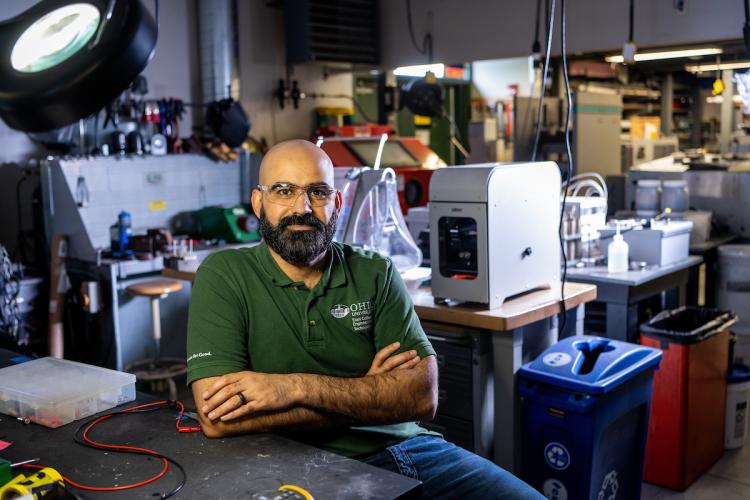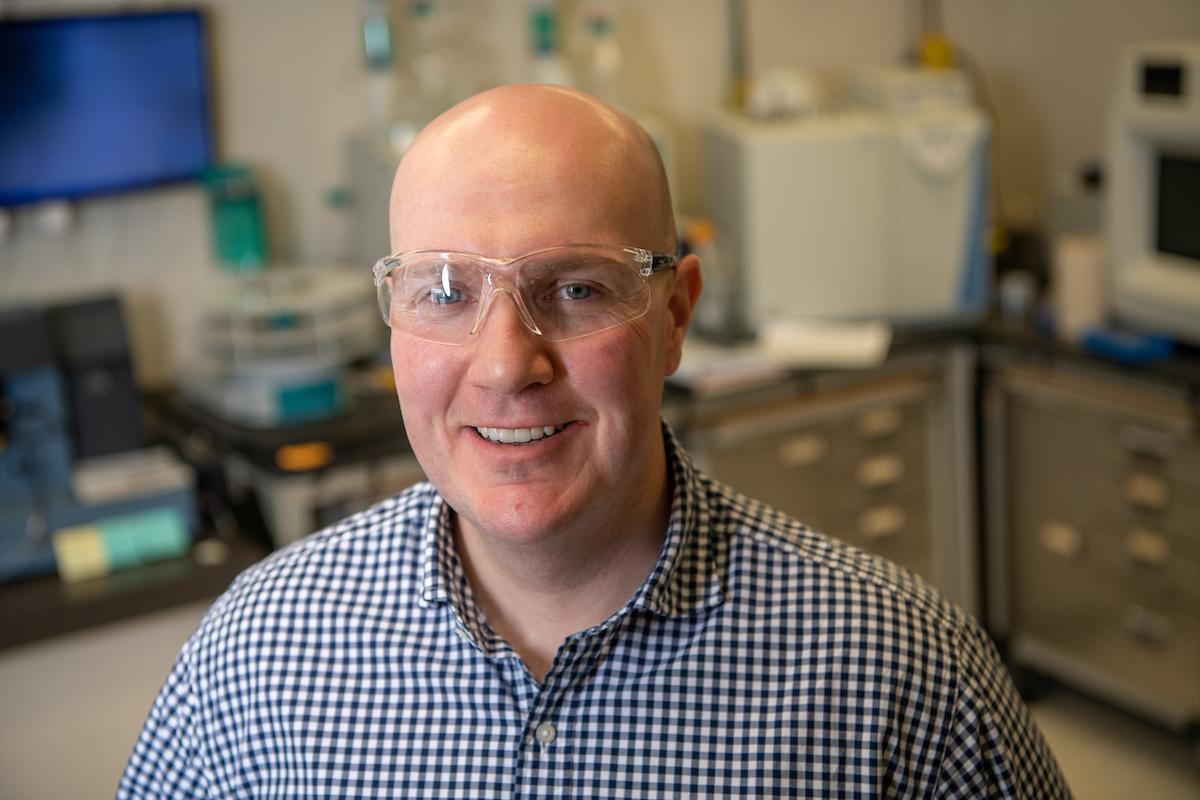
U.S. Department of Energy selects two OHIO projects to develop advanced carbon-based materials

The Russ College of Engineering and Technology’s Institute for Sustainable Energy and the Environment (ISEE) has been awarded $2 million for two projects by the U.S. Department of Energy to develop advanced filaments for additive manufacturing and graphite for energy storage applications from mining wastes.
Industry partners will provide an additional $419,048 of cost-share. Both projects support the goals of the United States government to transition to 100% clean energy by 2035.
“These awards build upon ISEE’s existing portfolio of innovative technologies to beneficially impact our society,” Jason Trembly, Ph.D., Russ Professor of Mechanical Engineering and director of ISEE, said. “I am excited for the multi-disciplinary experiential learning opportunities the projects will provide our students to develop sustainable carbon-based materials for manufacturing, building, and energy applications.
“I am also very proud of the leadership shown by Yahya Al Majali, who as a graduate student developed an original research idea which was selected through a nationally competitive review process,” he added.
Trembly serves as the principal investigator on the first project, which aims to utilize mining wastes and byproducts to develop graphite materials. These graphite materials, which are largely imported into the United States, would be used in lithium-ion batteries (LIBs). LIBs are used widely in everyday items but gaining significant importance in reducing carbon emissions from the transportation sector.

Domestic sourcing of natural graphite materials for LIBs has historically been challenging, resulting in reliance upon foreign sources. In addition, less than 10% of LIBs are domestically manufactured, limiting U.S. energy and economic security. Utilizing mining wastes and byproducts to domestically produce graphite materials, the United States has a path to greater energy and materials security.
“Electrification of the transportation sector is going to drive tremendous growth in LIBs over the next decade,” John Staser, co-principal investigator (co-PI) of this project, said. “The United States is currently at a disadvantage regarding battery manufacturing capacity, and a lot of that is a result of unavailability of critical materials. Funding from the Department of Energy will help us address some of those materials issues and better position the country to compete in the emerging energy space.”
The second project selected by the DOE, to be headed by Mechanical Engineering Ph.D. candidate Al Majali, will use mining waste and convert it into 3D printable filament materials, aiming to create solid carbon structures. These materials, both cost-effective and sustainably produced, can be used as a replacement for concrete in building and construction, tooling and casting materials for manufacturing, and alloys used in transportation and defense applications.
“One doesn’t think of mining wastes or coal as being a green material, but it is being used in a way that is quite green,” David Drabold, Ph.D., co-PI of this project and Distinguished Professor in the department of physics and astronomy in the College of Arts and Sciences, said.
As the co-PI on this project, Drabold’s role on the project focuses primarily on the theory of material science. However, he was quick to draw his attention to the success of the project’s principal investigator Al Majali.
Al Majali has been working at ISEE alongside Trembly since 2019, which has allowed him to observe and learn from Trembly’s leadership on other significant projects that have emerged from the institute in recent years. It was on these projects that Al Majali explored using coal waste as a filler for plastic materials and gathered the skills to begin thinking about his own projects.
“Dr. Trembly encouraged me to write the proposal,” Al Majali said. “Without his help and guidance, we wouldn’t have won this grant. I explained the idea and everyone got excited, but I didn’t know how to execute it. Dr. Trembly said, ‘Yes, I’ll show you how to execute the idea.’”
While Al Majali’s role as the principal investigator on a project of this magnitude is uncommon, student participation at ISEE is encouraged and necessary. Both projects funded by the DOE create hands-on experiences for students who are interested in researching sustainable energy and materials.
In addition to the experiential learning component, students will also explore how industry partners like General Motors, LLC; Koppers Inc; American Electric Power; CONSOL Energy; Engineered Profiles; CFOAM, LLC; and OMNIS Regenerative Energy contribute to these research projects, expanding their professional skillsets and networks in the industry.
The ISEE allows students to participate in research that makes a difference. They can explore new ideas that have the potential to make a lasting impact on industry, the environment and sustainability practices.
When asked about his reaction to hearing the news about funding from the DOE, Al Majali said, “It’s an amazing feeling. Words fail to describe my feelings. I have always been dreaming. The reason I came to do a Ph.D. all the way from Jordan was because I wanted the freedom to execute new ideas.”
